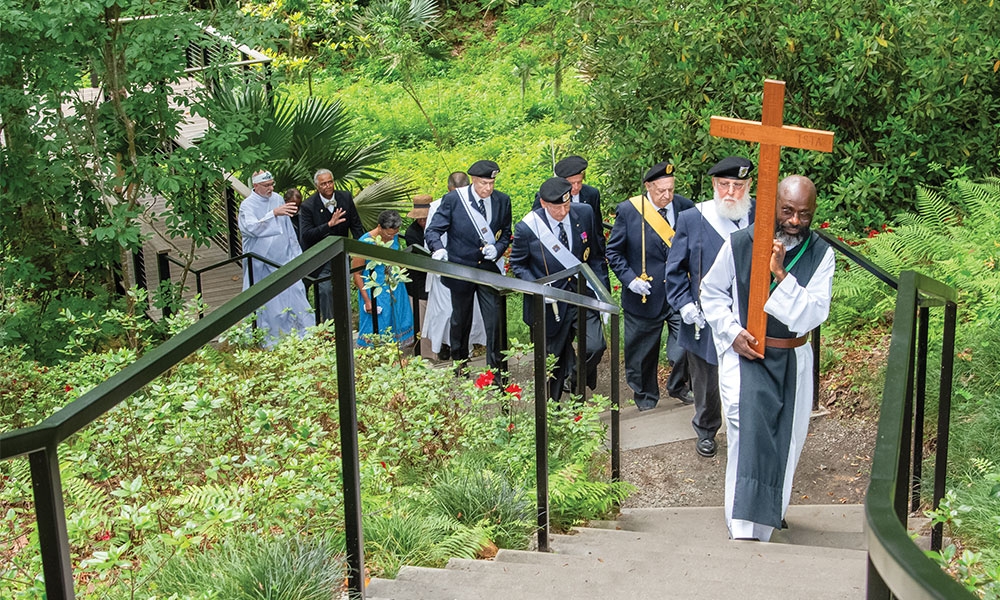
Abbey’s meditation garden dedicated to honor enslaved people
On April 26, Mepkin Abbey dedicated its newly completed Meditation Garden of Truth and Reconciliation, honoring the memory and legacy of the enslaved individuals who once lived and labored on the grounds of the former Laurens Plantation. The solemn event marked a significant step toward healing, truth-telling, peace and historical reckoning.
On April 26, Mepkin Abbey dedicated its newly completed Meditation Garden of Truth and Reconciliation, honoring the memory and legacy of the enslaved individuals who once lived and labored on the grounds of the former Laurens Plantation. The solemn event marked a significant step toward healing, truth-telling, peace and historical reckoning.
An estimated 100 people gathered at the Trappist monastery for the ceremony, which featured prayers, music and reflections on the site’s painful past but hopeful future.
Mepkin Abbey and the garden sit on land that was once part of the Laurens Plantation. John Laurens, a Revolutionary War figure known for advocating the emancipation and enlistment of enslaved people, once resided there — a historical connection that deepens the meaning of the site.
Father Joe Tedesco, Mepkin superior, said it is fitting that a memorial be dedicated to all the enslaved people so that their memory and contribution can be remembered and honored. Change the world by compassion and redeem by prayer, he said. “Their souls are calling us.”
U.S. Rep. Jim Clyburn of South Carolina joined other speakers, including Dr. Alison McLetchie, an assistant professor of sociology and anthropology with expertise in race, ethnicity, economic inequality and religion — particularly Catholicism — and members of the garden’s Planning Committee. Speakers addressed the importance of acknowledging institutional inequality and engaging in the ongoing work of reconciliation.
Inspired by South Africa’s Truth and Reconciliation Commission, the Meditation Garden is designed to be symbolic and contemplative. Its features include a lemniscate (figure-8 or infinity symbol) path representing eternity and infinity and a tabula rasa, or “blank slate,” evoking the erasure of history and the unrecognized contributions of enslaved Africans.
The ceremony included a procession led by Brother Ambrose Porter, who carried a wooden cross that was brought by the first monks to Mepkin in 1949. The procession wound down a ravine, crossed a bridge and entered the garden, where Bishop Jacques Fabre-Jeune, CS, offered a blessing.
The dedication concluded with a communal singing of “Lift Every Voice and Sing,” often referred to as the Black national anthem.
The garden, titled A Garden for Truth and Healing, invites visitors into quiet reflection and challenges them to recognize the legacy of slavery, engage in honest dialogue, and embrace compassion as a force for change and a future in peace.
Deirdre C. Mays is a writer, photojournalist and the former editor of The Catholic Miscellany. Email her at dcmphotoj@gmail.com.



